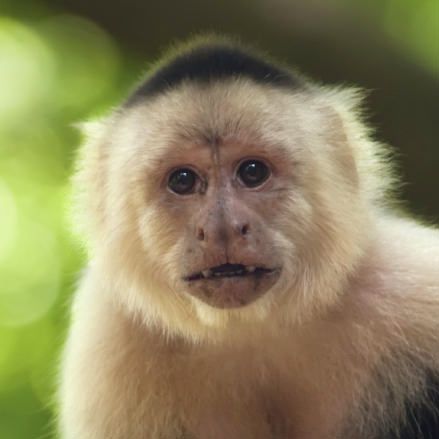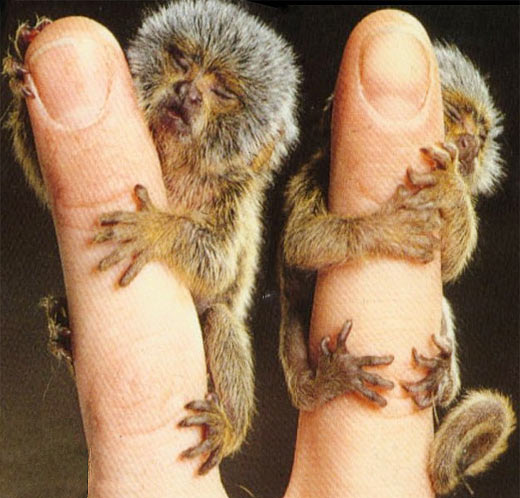Full video at the bottom.

Starts of in Thailand or Sri Lanka (I think according to the statues carved on cliffs and other sleeping ones). Then straight over to South America and capuchin monkeys. Judging from fossils they’re very like the earliest monkeys. What give them the edge is their big brains. No other monkeys can spot and exploit an opportunity as well as these. Lol they’re so inquisitive, nothing gets past them… there’s a shot of one digging at a crab hole. They’ve figured how to open air tight clams too… if you hit them hard enough and long enough the clam eases up. Shot of 20 monkeys banging clams at tree trunks/branches. 10 Minutes on and they’re still banging away. Not fast food then ay? Funny shot of young one observing and trying it himself… but instead of banging, dude’s just rolling it on the branch, then gives up and flops down on the branch to sulk lol. David lays two bunches of leaves, ones an antiseptic/insect (pipa leaves) repellent and the other just looks like it. Wow… one monkey grabs it, so many others get together, even ones that have grudges all forget their issues for the pipa rubbing group tradition.

Over to Uakari monkeys. Gaaad dayum they have extra pink hairless faces. For a sec I thought it was the butt. The brighter the scarlet the more senior the animal. As for the Saki monkeys… they have special teeth so they can eat nuts which no other animal can crack. Then the Spider monkey has long limbs and a grasping tail which help it collect some hard to collect berries.

Davids carried away by a crane in those observation jungle type places. All because he wanted to show us a monkey that could go high up to weak branches to get food that other monkeys cant. The Pygmy Marmoset, the smallest monkey in the world, no bigger than an adult hand. Its feet are so small it cant grasp much but small twigs and the nails keep it from slipping. They look like samurai rats/ninja squirrels lol. Very sharp, very fast and hardly moves the branches/stems while moving. David shows us a tree with uniform bumps… looks natural but they’re inflicted by the lil munchkins. They eat the gum sap which they force out of the tree by gnawing at the bark. They reopen the closed up wounds too, to make sure there’s supply the next day. Rival groups case them away from their well kept tree. So the displaced start scent marking nearby trees which strengthens their resolve to claim back their turf. Whoa, it got gangsta for a minute and they had their tree back.

Douroucoulis/Owl monkeys are next. Nocturnal monkeys. There’s evidence that they became nocturnal only recently. Day breaks and the dourocoulis are replaced by tamarins. Google imaged them… some species look wicked! These ones have long moustaches. The female always produces twins and she has two male partners. She uses her tongue to single one of them to take over the twins. Both are eager to do so coz each regards the babies has his. But the twins are reluctant, mommy’s best! Finally she’s free and good she is coz she has to eat more to provide milk for the mama’s boys. It gets harder as there’s other kinds of tamarins. The saddleback tamarin looks like something out of thundercats. They usually guard they food ferociously but luckly these ones don’t mind feeding side-by-side. And the follow each other. They share an enemy too. Alarm calls that both species understand signal the Tyra (kind of weasel). Another reason the different species don’t mind feeding/traveling together is to know who’s nibbled on what and where.

Howler monkeys… 10 times the size of tamarins. They specialize on leaves. Young ones are red and succulent but protected by poisions. While the mature green ones poisons have faded but they’re fiberous/woody and not very succulent. So what a leave eater would want is something inbetween. Not too red, not too green… which is why color visions would be so crucial. Now even the best leaves are hard to digest so the howler monkeys spend half the day just lying around digesting their grub. Lol they look so hopeless laid out on branches. Since leaves are not very nutritious, howler monkeys use a more labor saving way of chasing away intruders. They howl… DUH! This is made possible by a specially enlarged bone in the throat. It’s the loudest noise produced by any animal and the whole family joins in almost every evening. Lol since their rivals never really move anywhere, its hard to tell who’s winning.
The black and white colobus is the equivalent of the South American howler. Red colobus can eat unripe fruit and leaves coz of their special stomach. Whereas saki monkeys got the gangsta jaws to break tough foods. Then you got monkeys more general in their diet, a bit like capuchins. They’re called Guenons. 17 different kinds and most colourful of monkeys. All guenons eat fruits and insects but each looks for them in their own levels in the forest.
Colours don’t do much if the visibility is poor. And that’s the case in the Tai Forest in West Africa. Wicked shot of crown eagle carrying away a monkey. Missing a warning could be fatal. So animals have formed alliances. Some keep an eye out on ground level, including mongooses. Whole on the branches several kinds of monkeys patrol the area. So the network goes from the canopy right down to the forest floor. There’s hardly any squabbles for food coz all find it in their different way. Diana monkeys hang out at the top of the canopy so they can spot threats from the air. Special calls signal monkeys to drop down without question when the crown eagle decides to drop by. Next, David sets up a teddy-leopard??? Pulled by rope on a track. To find out each monkeys special call for that one. In the leopards case they don’t retreat, they go towards it coz once its spotted it usually goes away.
Amazon #ads


Back to the ancient city of Polonnaruwa in Sri Lanka. The city has crumbled but the society that were there then and still there now… Toque Macaques. They’ve been studied for years but only in the last few decades have they been understood more. One of the most studied groups. Their trials and tribulations have been recorded for the past 30 years. They may play as equals but different futures ahead of them. A ruthless class system comes into play. The high born came too late to feed and the berries are hidden in the cheek pouches of the others. She spots an elder and coz of her rank takes anything she wants from the lower ranking elder. Elder dunt look too happy about it. Elder tries to rest as higher rank brat tries to dig past elders teeth. Elder can make it difficult but if he does it too much he risks a beating from the others. Lol mating time the males flutter their eyelids and flash their teeth. Looks crazy. Lots of ready males but a shortage of females. Now one of the males after a big deal of political maneuvering has become alpha male. He has frist pick right? ‘We’ll see’ thinks Booster… young male hoping to beat the system. Alpha male has buddies who even reprimand any female that tries to sneak away. So Alpha gets down to some monkey business and buddies are looking away so Shanti tries to get Boosters attention. She thinks he’s gonna be the next Alpha. Shanti and Booster do the eye and teeth thing discreetly not to get caught my Alpha who’s grabbed himself another honey. Booster and Shanti get their quickie! Now the bigger the family the bigger brain you need. Hmmm I thought that was going somewhere.

So 10 million years ago there was a major climate change. Places became dryer, rainforests shrank and were replaced by scrub and open grassland. There was lots of food and some monkeys came down from the trees and bushes, out into the open to find it. They found familiar food like flowers and berries at first… then they found all other kinds. Shots of cactus eating, bulb eating… even rabbits. Shot of baboon grabbing insect grub from the shores of Kenya’s Rift Valley. Some baboons have become more ambitious thus chasing flamingoes too. Wicked shots of kills. These guys only figured how to do this 5 years ago but the skill spread quick. Since the open has larger predators, baboons aint safe either, so they form large groups. Which gets tricky as their structure is even more complex. When a female is ready her bottom swells and becomes bright pink. All males see the bootie but she’s only offer herself to the brotha that looked after her through the year. Like Santa and gifts. Another male wants to join the group so he befriends one of the senior females. Alpha male pushes his weight around and takes over others spaces. Grooming and looking after babies are good ways of getting into the group or building relationships. Also, kids are well protected so if you’re holding one you wont be hit which is a good way to protect yourself if you’re feeling threatened.
David gets technical about brain size corresponding to group size. So scientist may not be able to tell what monkey brain it is but he sure as hell will be able to predict accurately the group size.

500 miles away in Ethiopia live the largest monkey groups. The Gelada monkeys are the worlds only grazing monkeys. These guys gather into enormous herds. Coz they have to use their hands to grasp the grass they sit a lot and most of their lives shuffle along on their backsides. Which is why their sexual displays have moved up to their chest so instead of pink butt you see pink cleavage. An indication of strength/virility and status could be told at a glance. They looks so furry and cute. Like hunched yetis. Uhoh… bachelors invade the group… they avoid the brightest chested males as those are in their prime. Less impressive ones will have to prove their worth in battle. Note: The top lip sure flips a long was back. One flips another answers with the same. Will is a challenge. And its about that time… to get gangsta!!! The fights are more for sure and injuries harldy occur. Sure looks ferocious though. All this has wasted precious grazing time… since they use their hands a lot they don’t groom each other… so to maintain relationships they chatter. The same need to communicate lead to the evolutions in our own species.
Life of Mammal’s
1. A Winning Design | 2. Insect Hunters
3. Plant Predators | 4. Chisellers
5. Meat Eaters | 6. The Opportunists
7. Return to the Water | 8. Life in the Trees
9. The Social Climbers | 10. Food for Thought




